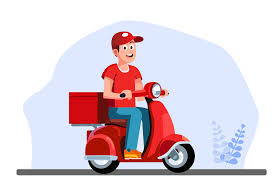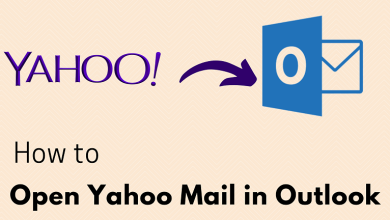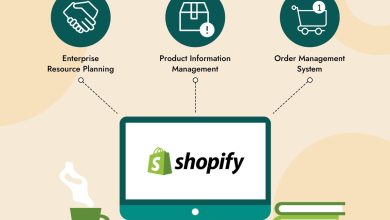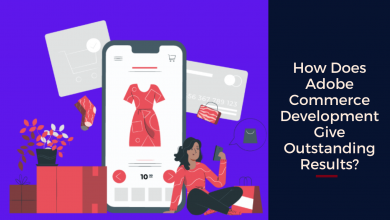Develop an On – Demand Food Delivery App like UberEats

Every organization’s internet presence is becoming increasingly important in today’s tech-driven environment. In such an environment, the food industry has risen to prominence, leveraging on growing technologies to meet altering client wants. On-demand meal delivery apps like UberEats enable food chains and restaurant corporations to accept online orders and develop their businesses. As a result, new entrepreneurs are attempting to create their own on-demand meal delivery software akin to UberEats.
This article is a must-read if you wish to delve into the vast food business opportunities by developing an on-meal delivery platform. In this section, we’ll go over some of the things you should consider before designing and launching a platform like UberEats.
The Revenue Model of On-Demand Food Delivery Apps
On-demand meal delivery apps, such as UberEats, combine all restaurant operations under a single app and employ a logistic network to safely deliver food to customers. These are mainly aggregators of restaurants and delivery agents.
On-demand meal delivery apps make money in the following ways.
Delivery fees for on-demand meal delivery applications run from $2 to $8, depending on the distance traveled. The buyer is charged a delivery fee for each order.
Food delivery services, such as UberEats, can also generate revenue by charging delivery fees. The majority of well-known delivery services charge a 15% to 40% fee for each order received.
The platform may use in-app promotions to have a single restaurant appear first in search results. This allows restaurants to boost their visibility and reach their target audience. Promotions are another way for food delivery apps such as UberEats to make money.
Conduct a Market Analysis
When developing an on-demand meal delivery platform like UberEats, just as it is for brick-and-mortar businesses, a thorough market study is required. Understand what a target audience is looking for, bestselling food items, and competitor food applications. This will help you decide which features to include in your meal delivery app. Depending on the intended demographic, you can include a specific feature to make the app more user-friendly.
Focus on the On-Demand Food Delivery Model
You’ve done your market research and have a strong understanding of how these meal delivery companies earn money. The following stage is to choose a business model for your food delivery platform. There are two fundamental business models for food delivery:
- Only-on-order model
- Order and delivery model
The app allows customers to place orders and partner restaurants to accept and manage orders in the order-only approach. However, in the order & delivery paradigm, users and restaurants can take advantage of a variety of additional services. Users in this model can have the ordered item delivered to their designated location for an extra fee.
Must-Have Features for On-Demand Food Delivery Apps
So, now that you’ve decided on the business plan for your application, it’s time to consider the features you’d like to include in your on-demand food delivery platform. To make things easier for you, we’ve organized the functions into four app panels –
Admin Panel
Administrators may manage many aspects of the on-demand food delivery business from a single app panel thanks to this app feature. Administrators have authority over:
- Delivery management.
- Restaurant management.
- Payments history.
- Notifications.
- App-specific promotions
- Statistic reporting
A panel of Restaurant Partners
This is an advantageous tool for partner restaurant businesses because it allows them to view and manage orders and business in a single spot. Owens can use a restaurant app to manage the following tasks:
- Administration of orders.
- Menu administration.
- Maintain a record of deliveries and payments.
- Help and assistance.
- Payments Tracking and delivery
- Notifications
- Business performance.
The User Interface
The user panel is an important part of an on-demand food delivery app like UberEats. Users have access to data that enables them to –
- Order tracking.
- Look over the restaurant’s menu.
- Examine the ratings and reviews.
- Make use of a choice of payment options.
- Compile reward points.
- There are take-out options available.
- Filters for more in-depth searches.
- Maintain a record of prior orders.
Panel of Couriers
This app feature is perfect for couriers or delivery boys because it allows them to manage the entire app and orders from a single dashboard. The courier panel can be used by users to:
- Login safety
- Deliveries are under control.
- Real-time tracking
- Orders are either accepted or denied.
- Examine their total number of working hours and profits.
- Management of several deliveries
- Notifications
The Development of an On-Demand Food Delivery App
You’ll incorporate the features into your on-demand food delivery software once you’ve decided on them. Take a closer look at some of the innovations that can help you launch your own food delivery service. When it comes to developing an application, there are essentially two techniques to choose from. You can make a choice based on the technique that best meets your development needs. Let’s go over the methods in depth now:
Build an App from the Ground Up
The creation of this app begins from scratch, and the developer must write code for each and every feature that will be added to the platform. Because each piece of code is written from scratch, it is a time-consuming procedure. To guarantee that the app works properly, you’ll also need to hire a developer, designer, and QA tester. As a result, the overall development cost of the project will grow. This app development technique is advised if you wish to produce a completely new app with unique features and capabilities. Development costs often range between $20,000 and $40,000, depending on the additional features, functionality, and development business.
Clone App Development
This app development technique is more time-efficient and cost-effective than the previous one. There’s no need to write code or test functionality because it’s already been written and tested many times. Clone apps are essentially pre-configured solutions. These are totally tailored to your company’s requirements. Even with changes, you can get your UberEats clone up and running in two to four weeks. The cost of developing an app is between $8,000 and $10,000, depending on the level of customization and functionality desired.
You Can Get Help From a Good App Development Partner
Find the right development partner is the final stage of your on-demand food delivery app development process. To accelerate the development process, the top app development partner will select the best technology stack and give the best solution. When looking for a list of development firms, checking for on-demand food delivery development companies is a good place to start. You can narrow down your search by reading their online reviews and client feedback to discover more about the services they offer.
Last Thoughts
This brings us to the end of our talk on how to build an on-demand food delivery app comparable to UberEats. You now have a better understanding of the key steps you must take while developing your own application. We recommend hiring the best app development business as early as possible in the planning process. These professionals will advise you on the optimal technological stack to use, do market research, and develop unique features for your application.




